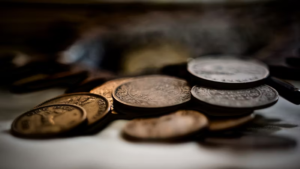In the world of numismatics, few discoveries generate as much excitement as finding a coin with an extraordinary value. The recent news of a rare Bicentennial quarter valued at nearly $190 million has sent shockwaves through the collector community. This article delves into the history, significance, and reasons behind the staggering valuation of this unique coin.
The Bicentennial Quarter: A Brief Overview
History and Design
The Bicentennial quarter, minted in 1975 and 1976, commemorates the 200th anniversary of the United States’ independence. The quarter features a distinctive design:
- Obverse: The familiar profile of George Washington, designed by John Flanagan, remains unchanged.
- Reverse: A special design by Jack L. Ahr depicting a colonial drummer boy with a torch encircled by 13 stars, symbolizing the original colonies.
Minting Details
These quarters were minted in large quantities at three locations:
- Philadelphia (no mint mark)
- Denver (D mint mark)
- San Francisco (S mint mark)
The San Francisco Mint produced both proof and uncirculated versions, some in a 40% silver composition.
The Extraordinary Value of the Rare Bicentennial Quarter
What Makes It Unique?
The specific Bicentennial quarter valued at nearly $190 million is not just any quarter from this series. Several factors contribute to its immense value:
- Unique Minting Error: This coin is believed to have a rare and unique minting error, making it one-of-a-kind.
- Exceptional Condition: The coin is in an unprecedented state of preservation, with no signs of wear or handling.
- Provenance: It has a well-documented history, tracing back to significant collections and auctions.
The Role of Rarity and Demand
In numismatics, rarity and demand play crucial roles in determining a coin’s value:
- Rarity: The scarcity of this particular quarter, combined with its unique features, significantly increases its value.
- Demand: Collectors and investors are willing to pay a premium for unique items, driving up the price.
Factors Contributing to the High Valuation
Numismatic Significance
The coin’s historical and numismatic significance adds to its allure:
- Historical Context: As a commemorative piece, it represents a pivotal moment in U.S. history.
- Design and Craftsmanship: The intricate design and quality of minting are highly regarded.
Market Trends
Current trends in the collectibles market also influence the valuation:
- Investment Appeal: Rare coins are increasingly seen as viable investment options, similar to fine art or real estate.
- Auction Records: Recent high-profile coin sales have set new benchmarks, contributing to higher valuations.
The Future of the Rare Bicentennial Quarter
Potential Buyers and Investors
The coin is likely to attract interest from:
- Private Collectors: Those looking to add a unique piece to their collections.
- Investors: Seeking to diversify their portfolios with tangible assets.
- Museums: Interested in displaying rare and historically significant items.
Impact on the Numismatic Market
The sale of this quarter could have several implications:
- Increased Interest: Boosting interest in Bicentennial quarters and other commemorative coins.
- Market Dynamics: Potentially influencing the valuation of similar rare coins.
Conclusion
The discovery of a rare Bicentennial quarter valued at nearly $190 million is a monumental event in the world of coin collecting. Its unique attributes, historical significance, and the current market trends all contribute to its extraordinary value. Whether you are a seasoned collector, a novice enthusiast, or an investor, this coin represents the pinnacle of numismatic achievement and a fascinating piece of American history. Keep an eye on upcoming auctions and market developments, as this rare find is sure to continue capturing the imagination of collectors and historians alike.


